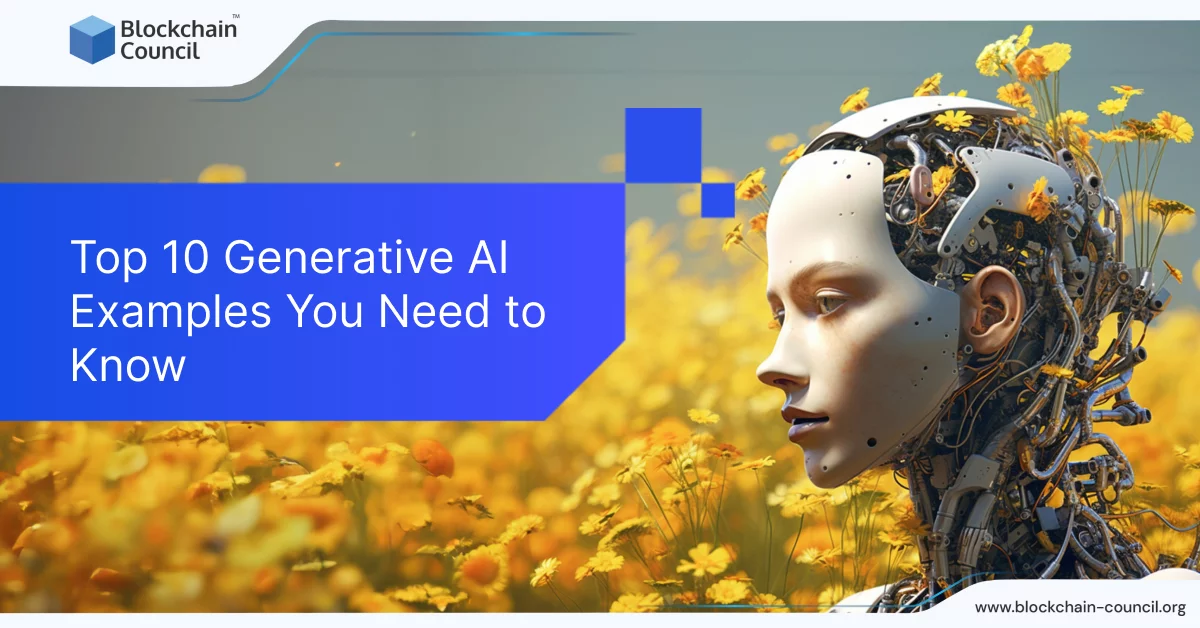
- Blockchain Council
- May 23, 2024
Summary
- Generative AI is a powerful technology that enables machines to create content autonomously using neural networks.
- Generative AI has applications in content generation, language translation, art creation, data augmentation, chatbots, medical diagnosis, etc.
- Examples of Generative AI include image generation using tools like DALL-E 2, MidJourney, Jasper, etc.
- Generative AI can also create 3D shapes with tools like ShapeNet, 3D-GAN, and 3D-VAE-GAN, synthesize text-to-speech with systems like WaveNet, Tacotron, and DeepVoice, and convert speech-to-speech using tools like Google Translate and Amazon Translate.
- It can generate text, write code, compose music, and even create videos from text or audio inputs.
- Generative AI is experiencing explosive growth, offers financial opportunities, has versatile applications across industries, and is in high demand in the job market.
- Certification programs in Generative AI can help individuals gain expertise in this field and open doors to exciting career opportunities.
Introduction
In the ever-evolving landscape of artificial intelligence, Generative AI has emerged as a groundbreaking field, pushing the boundaries of what machines can create. From generating art and music to crafting human-like text, Generative AI has made remarkable strides, captivating the imagination of both novices and experts alike. In this article, we delve deep into the realm of Generative AI and unveil the top 10 Generative AI examples that you can’t miss in 2023.
What is Generative AI?
Generative Artificial Intelligence (AI) is a cutting-edge field in computer science that revolves around machines’ ability to generate content autonomously. This technology leverages neural networks to produce text, images, videos, and more. At its core, it’s about enabling computers to create original content, just like humans, but in a highly efficient and scalable manner.
Generative AI systems are trained on vast datasets to understand patterns, styles, and structures in the data.
These systems consist of models like GPT-4, which stands for “Generative Pre-trained Transformer 4.” GPT-4, developed by OpenAI, has garnered significant attention due to its remarkable ability to generate coherent and contextually relevant text.
To put it simply, Generative AI enables machines to produce content that can be indistinguishable from content created by humans. It has applications in various domains, from content generation and language translation to art creation and data augmentation.
Also Read- AI In The FinTech Industry – All You Need To Know
What are the Benefits of Generative AI?
Now we will discuss the top 10 generative AI examples you need to know!
Image Generation
In the ever-evolving landscape of artificial intelligence, Image Generation stands as a testament to the astonishing capabilities of generative AI models. DALL-E 2, MidJourney, Jasper, and Stable Diffusion are some of the tools that can generate realistic and creative images from text inputs.
How it Works:
- Generative Adversarial Networks (GANs): GANs are at the heart of image generation. They consist of two neural networks – a generator and a discriminator. These networks work in tandem but have opposing roles.
- Generator: The generator network’s job is to create images. It starts with random noise and gradually refines it through multiple layers of neural networks. This process results in the generation of an image that gets closer to reality with each iteration.
- Discriminator: The discriminator network evaluates the authenticity of the generated image. It has been trained on a dataset of real images and aims to distinguish between real and fake ones. The generator’s goal is to create images that the discriminator can’t differentiate from real ones.
- Adversarial Training: The crux of GANs lies in their adversarial training. The generator and discriminator continuously compete in a feedback loop. As the generator improves, the discriminator’s job becomes harder, and vice versa. This competition leads to the generation of increasingly realistic images.
Examples:
- DeepDream by Google: DeepDream uses neural networks to transform photos into surreal, dream-like images. It gained fame for its ability to generate visually intriguing and abstract pictures.
- StyleGAN by NVIDIA: StyleGAN has taken the art of image synthesis to new heights. It can generate high-resolution, detailed faces of non-existent people that are virtually indistinguishable from real ones.
- DALL-E by OpenAI: DALL-E combines text descriptions with image generation. It can create images from textual prompts, such as “an armchair in the shape of an avocado.”
- Artbreeder: Artbreeder is a user-friendly platform that leverages GANs to let users create unique art by blending and evolving images. It’s a great example of how AI empowers creativity.
Also Read- Top 5 AI Trends You Can’t Miss
Semantic Image-to-Photo Translation
Semantic Image-to-Photo Translation takes image manipulation to a whole new level by understanding the context within an image and transforming it into a photograph. CycleGAN, Pix2Pix, and StyleGAN are some of the tools that can transform images from one domain to another using GANs.
How It Works:
- Semantic Segmentation Map: This process begins with a semantic segmentation map. This map is essentially an image where each pixel is labeled with the object or class it represents. For instance, in a photo of a street, the map would label pixels as ‘car,’ ‘tree,’ ‘road,’ and so on.
- Deep Neural Networks: Deep neural networks, often based on convolutional neural networks (CNNs), play a vital role. These networks are trained to understand both images and their semantic content. They learn to associate objects in the image with their corresponding labels in the segmentation map.
- Information Fusion: The neural network fuses information from the image and the segmentation map. It uses the map to understand which objects are where in the image and then generates a photograph that reflects this understanding.
- Realistic Photo Generation: The final step involves creating a realistic photograph. The neural network generates pixel values for the image based on the combined information from the segmentation map and its learned understanding of what each object should look like. This results in a photo that aligns with the semantic content of the map.
Examples:
- Pix2Pix by NVIDIA: Pix2Pix is a versatile model capable of various image translation tasks. It can turn sketches into photographs, generate satellite photos from maps, and even convert day scenes into night scenes.
- CycleGAN: CycleGAN is adept at domain adaptation. It can transform photos from one style to another, like turning photos from winter into summer or changing the style of artwork.
- SPADE (Semantic Image Synthesis with Adaptive Normalization): SPADE combines semantic segmentation with GANs to generate highly detailed images. It’s particularly powerful in generating realistic faces from semantic maps.
- AI-based Video Editing: Some AI-powered video editing tools use semantic understanding to replace backgrounds, add effects, and manipulate videos in real-time, revolutionizing the filmmaking industry.
Image Resolution Increase
Generative AI has revolutionized image enhancement. At its core, it uses deep learning algorithms to analyze and reconstruct pixel-level details in images, thereby increasing their resolution. Super Resolution GAN (SRGAN), ESRGAN, and Waifu2x are some of the tools that can enhance the quality and resolution of low-quality images using GANs.
How it Works:
- Data Training: Generative AI models are trained on massive datasets containing high and low-resolution image pairs. This enables the AI to learn the intricate relationships between pixel information.
- Neural Networks: The heart of Generative AI lies in its neural networks. These networks consist of multiple layers that decode low-resolution images into high-resolution counterparts. Convolutional Neural Networks (CNNs) are commonly used for this purpose.
- Loss Functions: The AI fine-tunes itself through loss functions, which quantify the difference between the generated image and the desired high-resolution version. This iterative process refines the model’s ability to reconstruct images accurately.
Examples:
Waifu2x: This open-source project uses Generative Adversarial Networks (GANs) to enhance anime-style images, bringing out intricate details.
- Topaz Labs Gigapixel AI: This tool employs deep learning to increase image resolutions while preserving sharpness and clarity, making it a favorite among photographers.
- NVIDIA Super-Resolution: NVIDIA’s research in AI-driven image enhancement has resulted in technologies that can upscale images in real-time, a boon for gaming and video streaming.
Also Read- Top 40 Artificial Intelligence Questions And Answers
3D Shape Generation
Generative AI’s prowess isn’t limited to 2D imagery; it also excels in crafting 3D shapes. ShapeNet, 3D-GAN, and 3D-VAE-GAN are some of the tools that can create realistic and detailed 3D models of objects or scenes from text or image inputs using GANs and VAEs. Here’s the process:
How it Works:
- Point Clouds: The AI takes a set of points in 3D space as input, often representing a rough outline of the desired object.
- Volumetric Representations: Generative models can convert these point clouds into volumetric representations, allowing for a more detailed understanding of the shape.
- Generative Adversarial Networks (GANs): GANs come into play, generating 3D shapes by altering the volumetric representation until it resembles the desired object. Discriminative networks ensure that the generated shape aligns with the training data.
Examples:
- Autodesk’s Dreamcatcher: This design software uses Generative Design algorithms to create optimized 3D shapes based on user-defined criteria, redefining industrial design.
- GANverse3D: Researchers have used GANs to create 3D models of objects from 2D images, bridging the gap between 2D and 3D worlds.
- DeepMind’s 3D World Models: DeepMind’s work in this field focuses on training AI agents to understand and manipulate 3D environments, opening doors for applications in robotics and simulations.
Also Read- Top 5 Skills Needed To Become A Prompt Engineer
Text-to-Speech Generator
Text-to-Speech (TTS) generators are AI systems that transform written text into lifelike spoken words. WaveNet, Tacotron, and DeepVoice are some of the tools that can synthesize natural and expressive voices from text inputs using deep neural networks. Here’s how they do it:
How it Works:
- Text Analysis: TTS systems break down input text into phonemes, the smallest speech units.
- Voice Synthesis: AI models then generate speech sounds by combining these phonemes.
- Natural Prosody: Advanced TTS algorithms consider punctuation and context to deliver natural-sounding speech.
Examples:
- Google’s WaveNet: Known for its eerily human-like voice, WaveNet uses deep neural networks for TTS.
- Amazon Polly: Polly offers multilingual TTS services with a range of lifelike voices.
- OpenAI’s GPT-3: GPT-3’s text generation capabilities extend to TTS, offering a versatile solution.
Also Read- How AI Can Benefit Our Daily Lives
Speech-to-Speech Conversion
How Speech-to-Speech Conversion Works: Speech-to-Speech Conversion, often called “voice cloning,” is another exciting aspect of generative AI. Google Translate, Microsoft Translator, and Amazon Translate are some of the tools that can convert speech from one language to another, or change the accent, tone, or emotion of a speaker using deep neural networks. Here’s how it functions:
How it Works:
- Voice Data Collection: The system gathers substantial voice samples from the target speaker.
- Deep Learning: Deep neural networks analyze the speaker’s voice patterns.
- Voice Synthesis: AI replicates the speaker’s voice to convert one person’s speech into another’s.
Examples:
- Respeecher: This tool allows dubbing in various languages while retaining the original speaker’s voice.
- Descript Overdub: It provides an intuitive platform for voiceover work, enhancing post-production efficiency.
- Lyrebird: Lyrebird offers customizable voice synthesis for various applications, including accessibility.
Text Generation
Text generation is a fascinating application of Generative AI that can be leveraged by both beginners and professionals in the field. ChatGPT, GPT-3.5, and Bing AI are some of the tools that can generate natural language texts on various topics and tasks using transformers.
How it Works:
- Recurrent Neural Networks (RNNs): Text generation often relies on Recurrent Neural Networks, which are adept at processing sequences of data. RNNs learn patterns in text and generate new content based on these patterns.
- Markov Models: Another approach involves Markov models, which analyze the probability of a word or character appearing after another. By chaining these probabilities, AI systems can create coherent text.
- Transformers: Modern text generation models, like GPT-3, utilize Transformers. These models have achieved remarkable success in generating human-like text by understanding context and contextually relevant word choices.
Examples:
- Chatbots: AI-powered chatbots generate text responses that mimic human conversations. They are widely used in customer support and virtual assistants like Siri and Alexa.
- Content Creation: Generative AI can assist in generating blog posts, articles, or product descriptions, saving time for content creators.
- Language Translation: Text generation is behind the scenes of machine translation tools like Google Translate, which can translate text from one language to another seamlessly.
Also Read- Top 10 AI Jobs By 2025
Code Generation
Code generation is a powerful application of Generative AI, particularly valuable for developers and programmers. DeepMind’s Alpha Code (GoogleLab), GitHub Copilot, and Codex are some of the tools that can write high-quality code for different programming languages using natural language inputs or existing code snippets using transformers.
How it Works:
- Syntax Parsing: Code generation models analyze programming language syntax and generate code that adheres to these rules. This ensures that the generated code is syntactically correct.
- Code Completion: Many integrated development environments (IDEs) employ AI-based code completion, which suggests code snippets as developers type. These suggestions are often generated using machine learning techniques.
- AutoML: Code generation can also extend to AutoML (Automated Machine Learning), where AI systems generate machine learning pipelines tailored to specific datasets and tasks.
Examples:
- Auto-Generated Documentation: Generative AI can create documentation for code, making it easier for developers to understand and maintain software projects.
- Code Synthesis: Some AI tools can take natural language descriptions of a task and generate code that accomplishes it, bridging the gap between non-technical stakeholders and developers.
- Bug Detection: Code generation models can be used to identify and fix common coding errors, improving software reliability.
Music Generation
Users can create original and diverse music tracks from text or audio inputs using generative AI. Magenta, Jukebox, and MuseNet are some of the tools that can create original and diverse music tracks from text or audio inputs using deep neural networks.
How it Works:
- Generative AI in music works by analyzing existing musical data and patterns.
- It uses algorithms to compose new music based on the patterns it has learned.
- AI models like OpenAI’s GPT-3 and Magenta by Google have shown impressive music generation capabilities.
Examples:
- Magenta’s AI Duet: Magenta’s AI Duet uses LSTM (Long Short-Term Memory) networks to create piano compositions that respond to user input.
- DeepBach: DeepBach uses deep learning to compose music in the style of Johann Sebastian Bach, demonstrating the AI’s ability to mimic historical composers.
Also Read- AI Vs Web3 – All You Need To Know
Video Generation
Thanks to the evolution of Generative AI and its applications, we can create realistic and personalized videos from text or audio inputs using generative AI. Synthesia, Wav2Lip, and First Order Motion Model are some of the tools that can create realistic and personalized videos from text or audio inputs using GANs.
How it Works:
- Video generation AI models use neural networks to analyze and synthesize video content.
- They can generate videos frame by frame or even manipulate existing videos to create new scenes.
- Techniques like GANs (Generative Adversarial Networks) have been employed for realistic video synthesis.
Examples
- DeepDream: DeepDream, developed by Google, generates surreal and artistic videos by enhancing patterns within existing images.
- GAN-Generated Faces: GANs have been used to create hyper-realistic faces and characters, showcasing the potential of AI in video content generation.
Why Generative AI Matters for Your Career
Generative AI, a subset of artificial intelligence, holds immense promise and potential for professionals at all levels, from beginners to experts. Here’s why you should seriously consider it for your career:
- Explosive Growth: The field of generative AI is booming. By 2025, it’s estimated that 10% of global data will originate from generative AI. This signifies a seismic shift in how businesses and industries operate. Getting in early can offer you a significant advantage.
- Financial Opportunities: The generative AI market is projected to reach a staggering $15.7 trillion by 2030. This isn’t just about technology; it’s about economics. A career in this field could potentially lead to substantial financial gains.
- Versatile Applications: Generative AI isn’t limited to one industry. It’s a cross-cutting technology with applications in areas like healthcare, entertainment, finance, and more. You won’t be confined to a single sector.
- Problem Solving: Generative AI thrives on solving complex problems. If you enjoy tackling intricate challenges, this field will keep you engaged and intellectually stimulated.
- Job Demand: With a growing adoption rate, especially in media, entertainment, and healthcare, the demand for generative AI experts is on the rise. By 2023, 33% of workplaces in the United States are expected to embrace generative AI.
Looking for a Career in Generative AI? Get Certified Today!
Certifications from reputable organizations like the Blockchain Council are recognized and respected by employers worldwide. It’s a validation of your skills and knowledge, giving you a competitive edge in the job market. As generative AI gains traction in the job market, employers actively seek professionals with expertise in this field. Your certification can open doors to exciting career opportunities. Here are the top Generative AI Certifications that you must check out!
Conclusion
Generative AI has not only pushed the boundaries of machine creativity but has also found its way into numerous industries, leaving an indelible mark on how we create, innovate, and solve complex problems. The top 10 Generative AI examples presented in this article represent just the tip of the iceberg in this rapidly evolving field.
From the art that challenges our perceptions of creativity to the music that stirs our emotions, and from the text that informs and entertains to the image transformations that fuel our imagination, Generative AI has woven itself into the fabric of our digital lives. It has become a catalyst for progress in areas as diverse as healthcare, entertainment, and transportation.
Frequently Asked Questions
- Generative AI is an evolving field of AI and computer science.
- It uses neural networks to create text, images, videos, and more.
- It enables computers to generate original content efficiently.
- Content Generation for websites and social media.
- Accurate Language Translation.
- Artistic Creativity in generating art, music, and poetry.
- Data Augmentation for improving machine learning models.
- Powering Chatbots, Virtual Assistants, and more.
- It uses Generative Adversarial Networks (GANs).
- GANs consist of a generator and a discriminator.
- The generator creates images, while the discriminator evaluates their authenticity.
- Adversarial training leads to realistic image generation.
- TTS generators transform written text into spoken words.
- They analyze text, break it into phonemes, and generate speech sounds.
- Consider punctuation and context for natural-sounding speech.
- Generative AI is a growing field with versatile applications.
- It offers financial opportunities and job demand is on the rise.
- It involves problem-solving and is relevant across various industries.
- Certifications in Generative AI can boost career prospects.

































































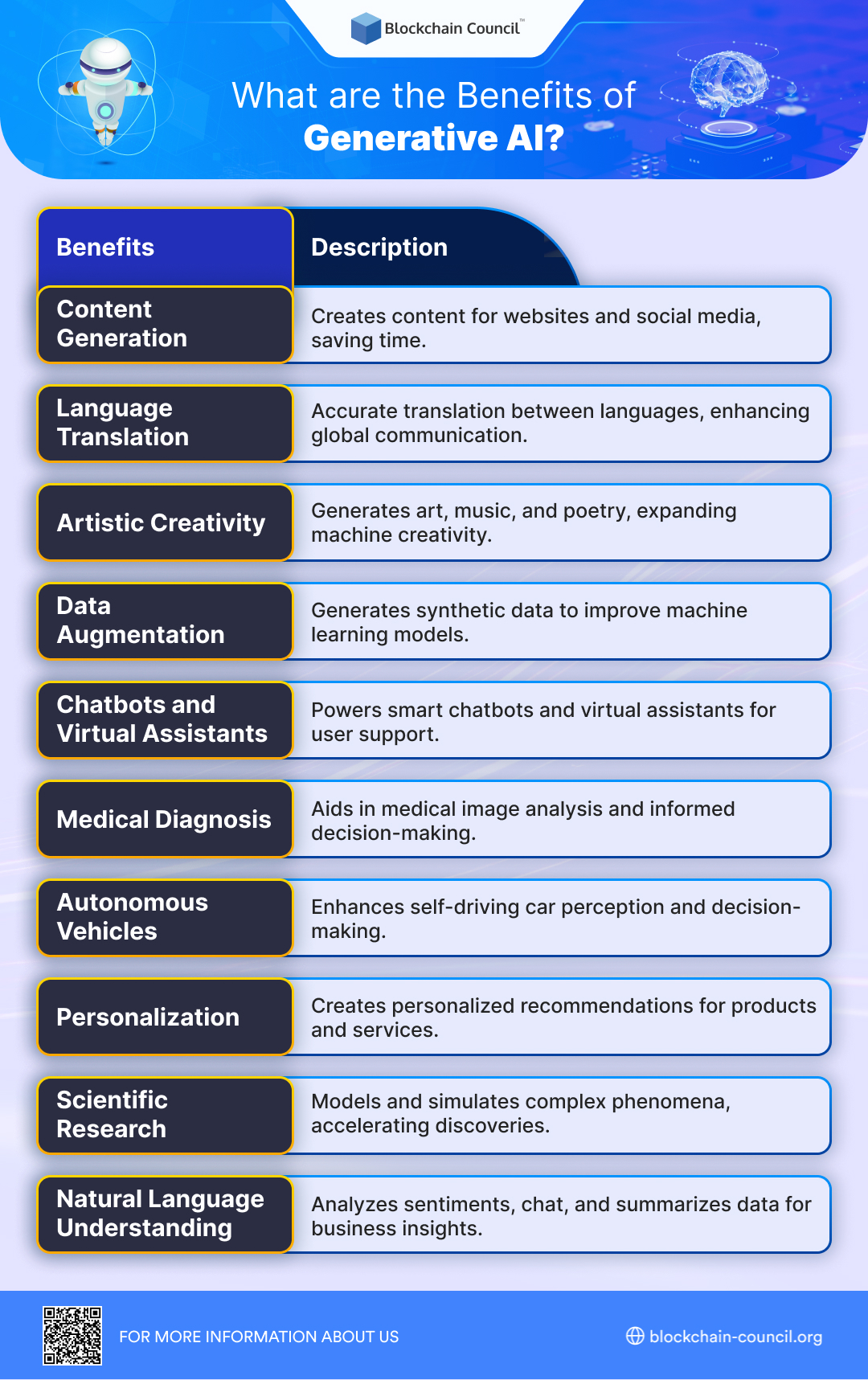
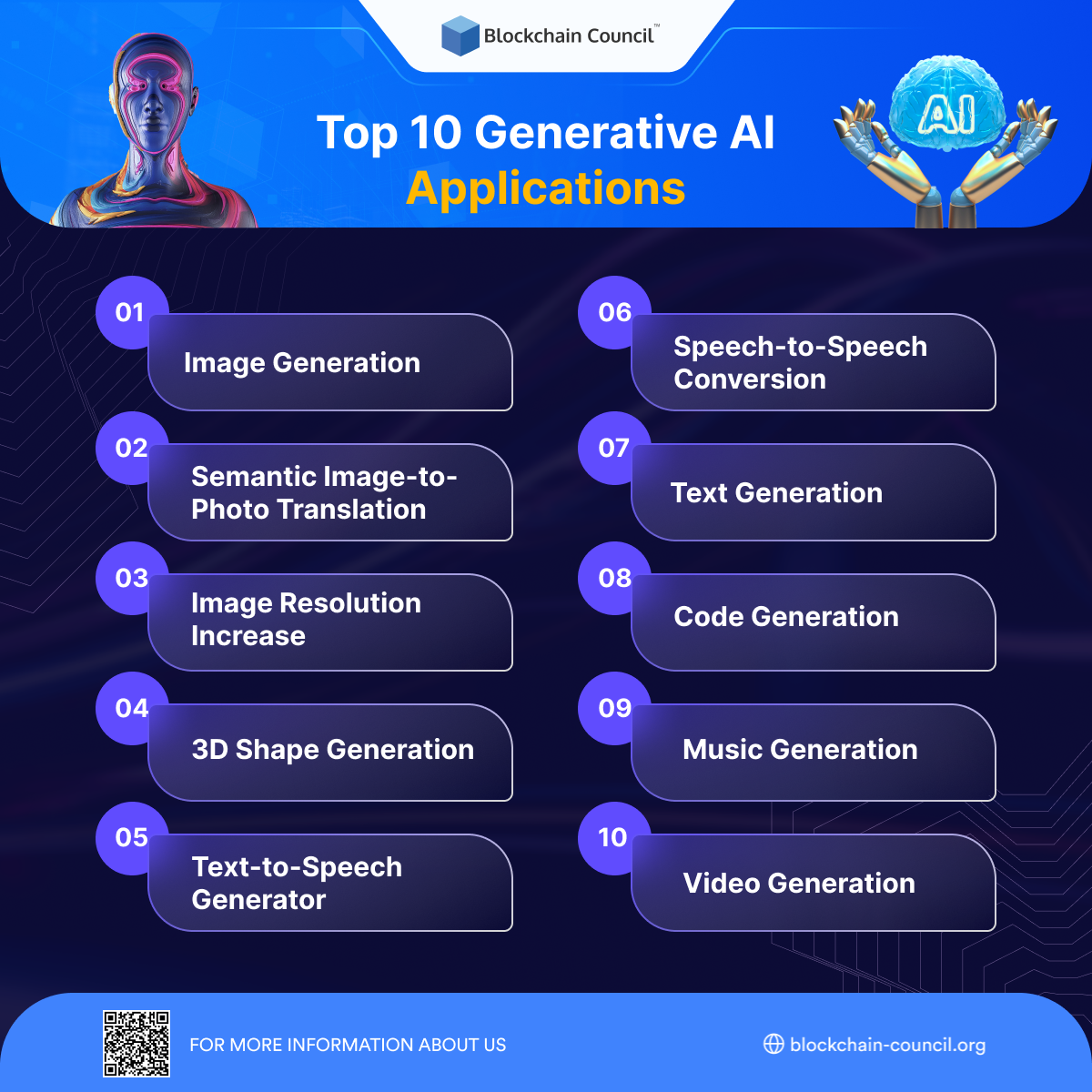
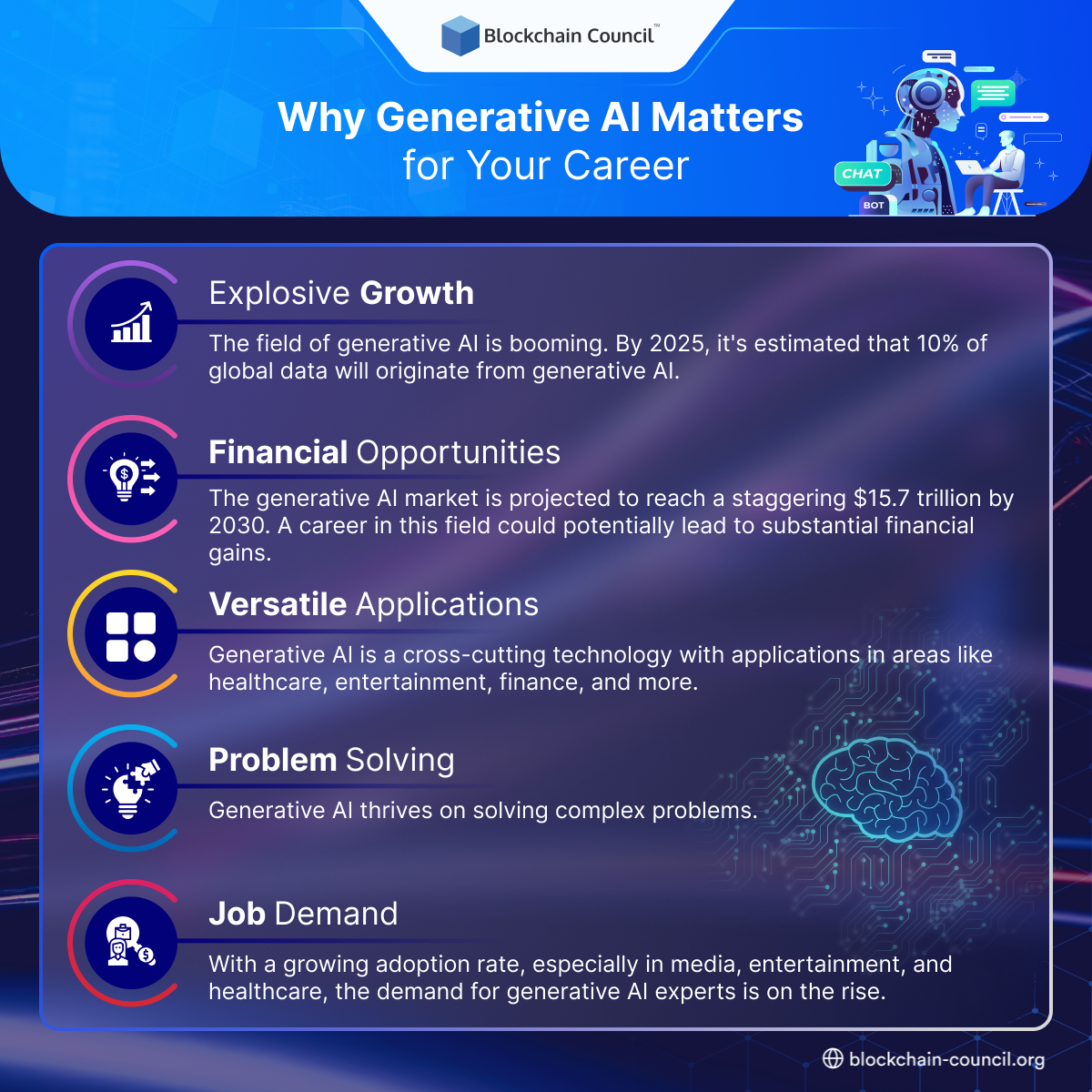
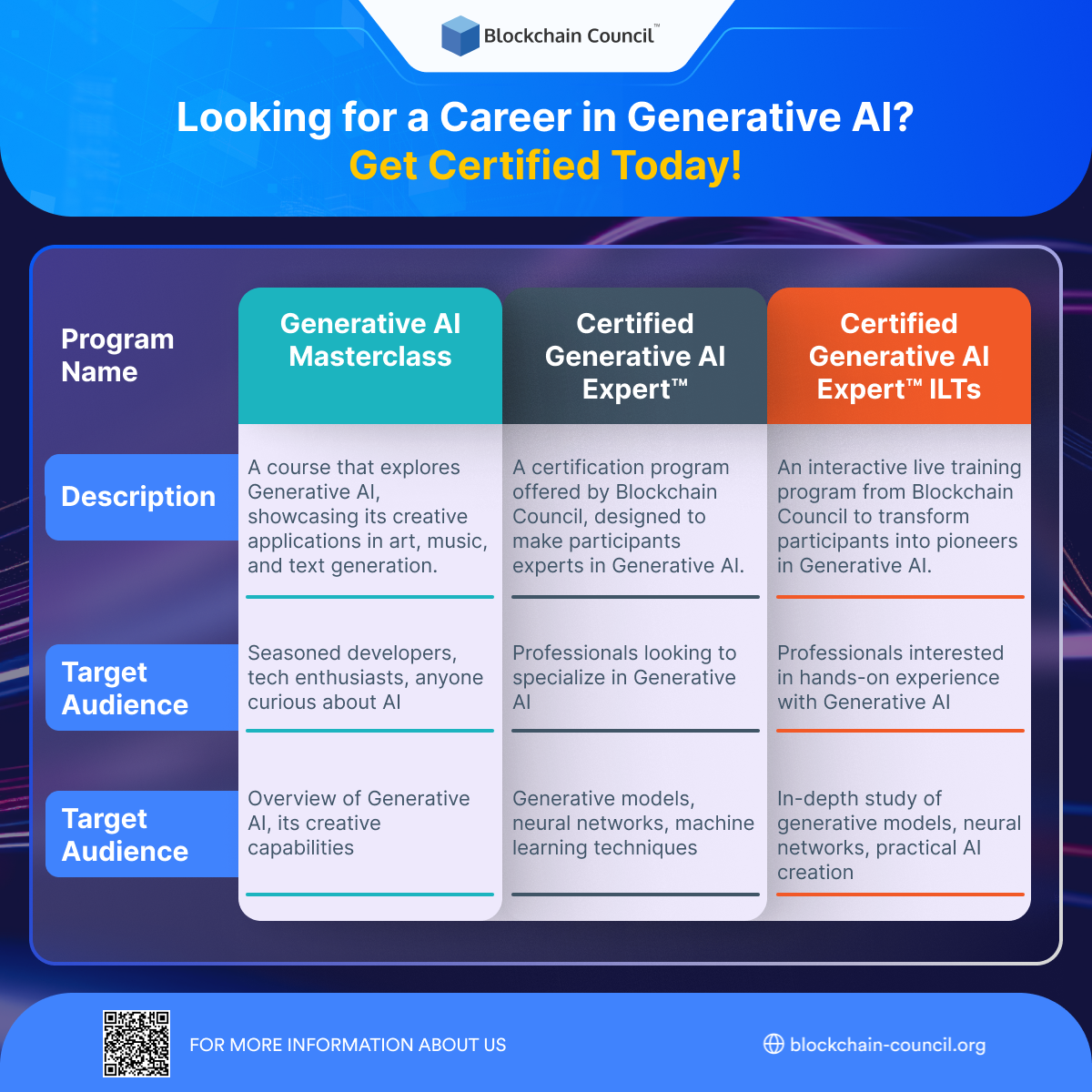

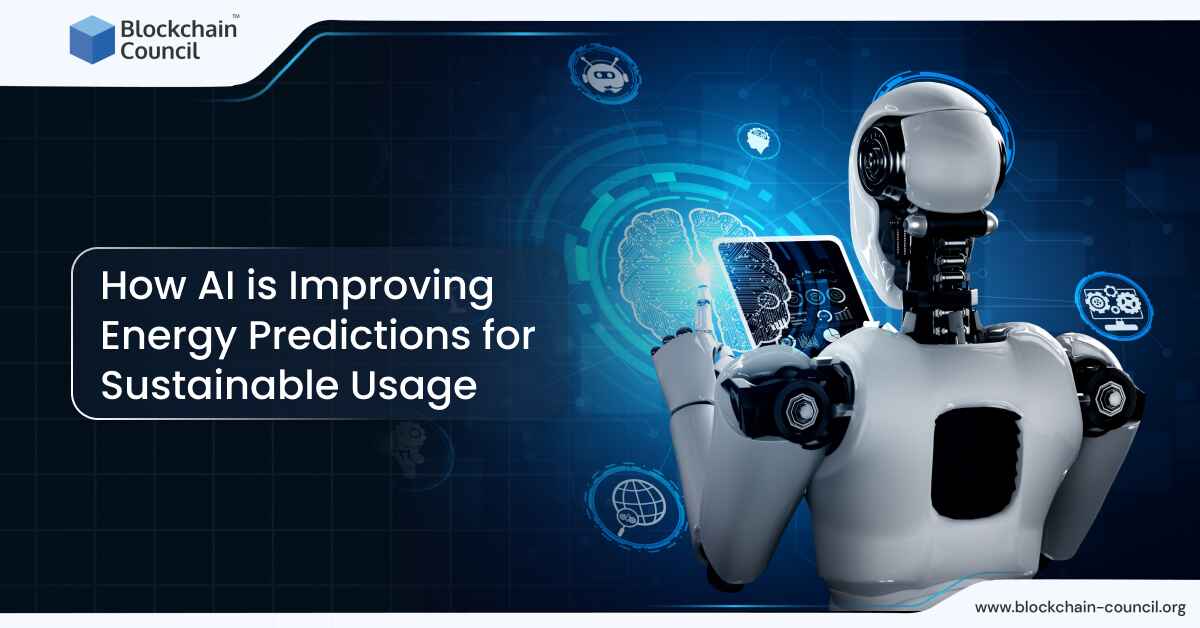
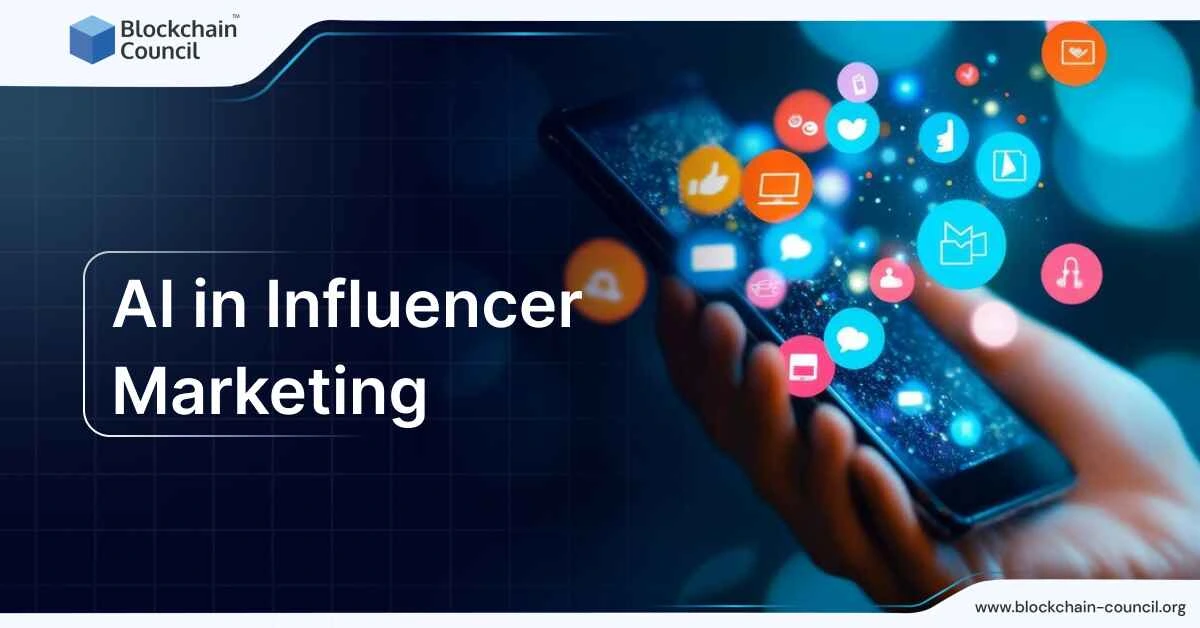

 Guides
Guides News
News Blockchain
Blockchain Cryptocurrency
& Digital Assets
Cryptocurrency
& Digital Assets Web3
Web3 Metaverse & NFTs
Metaverse & NFTs
